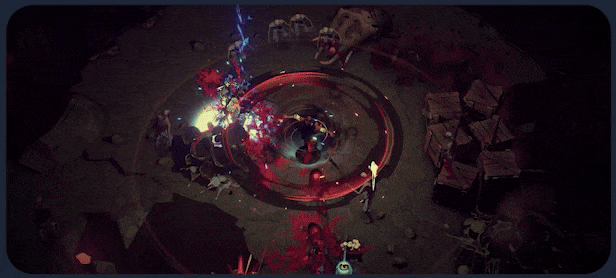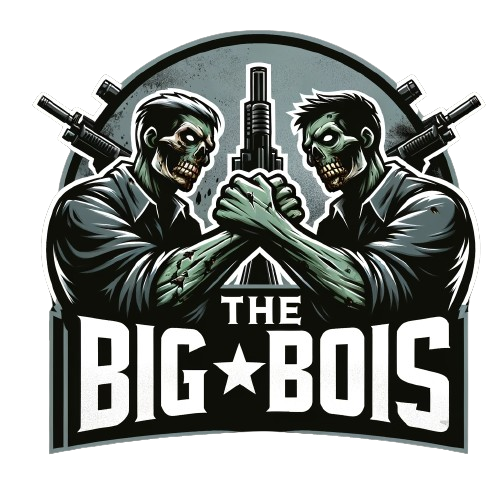If you’re hungry for a brutal, stylish, and intelligent fusion of roguelike tension and ARPG complexity, Hell Clock might be precisely what your dark heart desires. Set against the backdrop of a twisted retelling of Brazil’s War of Canudos, this is not your typical dungeon crawler. It’s a game that combines fast-paced combat, meaningful build diversity, and historical inspiration into a fiery cocktail of challenge and catharsis.
Narrative Depth in a Dark Historical Mirror
You play as Pajeú, a righteous warrior determined to rescue the soul of his fallen mentor, The Counselor, amidst a world corrupted by undead enemies and time-warped hellscapes. This story isn’t just window dressing. It feels purposefully anchored in real historical trauma, giving the action an emotional weight. It’s a game that wears its themes on its sleeve, from oppression and retaliation to spiritual vengeance.
The aesthetic is a searing blend of dark fantasy and baroque hellfire. Portuguese voice acting adds a welcome authenticity, and small narrative details are scattered throughout the campaign, offering lore for those who care to dig. For an ARPG/roguelike, the context feels refreshingly human.

Risk, Reward, Repeat
At its core, Hell Clock follows a deceptively simple formula: drop into a randomized dungeon, kill everything that moves, collect loot, and make it out alive—or die trying. Every run builds your character’s power, and every decision feels vital. The game expertly fuses traditional roguelike progression (randomized relics, permadeath) with action-RPG elements like skill-based combat, deep build customization, and a sprawling constellation upgrade tree.
Combat is fast, visceral, and beautifully animated. You can knife-dance through enemies, ring the Great Bell to crush skulls, or rain down bullets with a hand cannon. Each skill has synergy with certain relics, which brings us to the real meat of the experience: the loot.
Loot and Relic System
This is where Hell Clock absolutely shines. Unique and rare relics shift your entire build, often in strange or unexpected ways. One run, you might be stacking lifesteal and going full melee berserker. Next, you’re summoning projectile-spitting quills while dodging through crowds like a bullet hell ninja. The system rewards experimentation and adaptation.
Critically, you can’t hoard gear between runs. This means you’re always playing the hand you’re dealt. And while that might scare off min-maxers used to traditional ARPGs, it’s pure gold for fans of the roguelike genre.

Progression and Endgame
The campaign is structured across three acts, and each descent into the dungeon ramps up in intensity. Bosses become nightmarish bullet sponges or glitchy monsters with unpredictable attack patterns. The midgame hits hard, and the late game punishes poor builds brutally.
For those who crave even more pain, there’s Hell Mode and the Ascension system. Here, players choose negative modifiers (Penances) in exchange for powerful celestial blessings (Constellations). The cycle of stripping progress and rebuilding from scratch is divisive, but it gives a satisfying rogue loop: start weak, adapt fast, grow powerful, and face godlike foes.
Yes, some balance issues exist. Some relics and skills clearly outperform others, and the power curve can spike unpredictably. But this is Early Access done right. The developers have already implemented player feedback rapidly, and updates are rolling out regularly.
Visual and Audio Presentation
Hell Clock is a beautiful game. The art direction is a chaotic harmony of pixel grit and hellish majesty. Each floor is visually distinct, from crumbling cathedrals to flesh-covered prisons, and the screen often explodes with damage numbers and spell effects. It can be overwhelming, especially on later levels where effects obscure the battlefield.
Musically, it rocks. The soundtrack swerves between ambient dread and Latin-inspired metal fury. The sound effects hit hard: crunches, blasts, and otherworldly shrieks sell the combat. There are rough edges, sure—some effects lack polish, and certain UI elements need clarity—but the atmosphere is unmistakably intense.
Accessibility and Modes
Hell Clock respects your time (ironically). For those who want a slower pace, Relaxed Mode removes time pressure, making it perfect for narrative-inclined players. Vengeance Mode, introduced via community feedback, is a lifeline for players struggling with balance issues.
Still, if you’re easily frustrated, beware: this game can and will ruin your day if you’re not prepared. It’s a challenge-first experience built for genre veterans.

Room for Growth
Even with all its strengths, Hell Clock isn’t flawless. The endgame loop is polarizing. Some players dislike resetting progress every seven runs. Bugs still crop up—glitched bosses, UI hiccups, performance dips. Build variety, while deep, still leans on a few overtuned skills.
QoL improvements are needed: relic sorting, better damage transparency, and improved tooltip clarity. But with such a responsive dev team, it’s likely these fixes are already on the roadmap.
Pros:
- Incredible loot/build variety
- Responsive and brutal combat
- Excellent atmosphere and music
- Deep customization via Constellations
- Cultural narrative rooted in real history
Cons:
- Buggy boss encounters
- Visual clutter at higher levels
- Inconsistent difficulty spikes
- Limited build balance
- Lacks certain QoL features
Hell Clock: Hell Clock is for players who love a challenge, who don’t mind getting their builds broken and their egos bruised. It borrows the best parts of Diablo, PoE, Hades, and Binding of Isaac, yet still feels wholly original thanks to its bold cultural inspiration and smart mechanical design. It’s not for everyone. But if you’re someone who dreams in DPS numbers and lives for build theory, Hell Clock is absolutely worth it. – Obsidian


